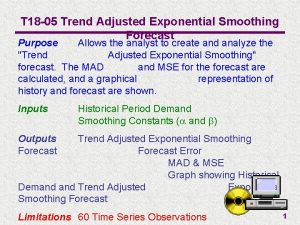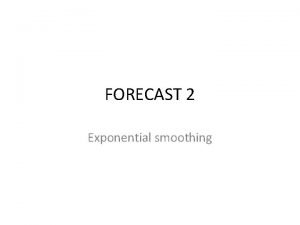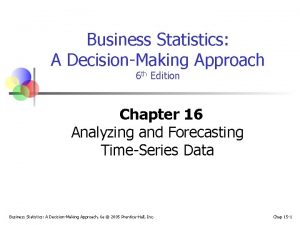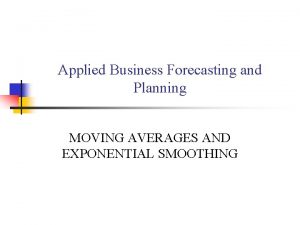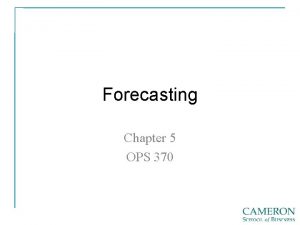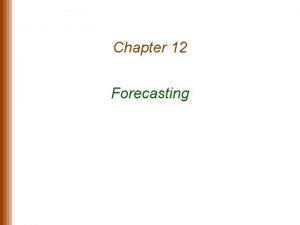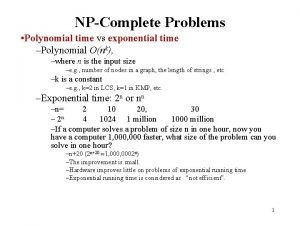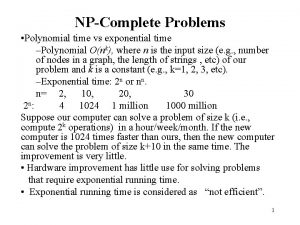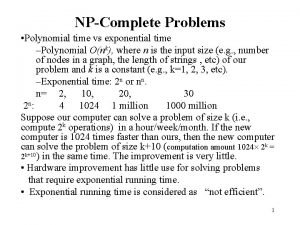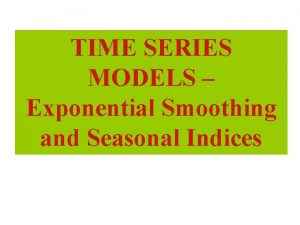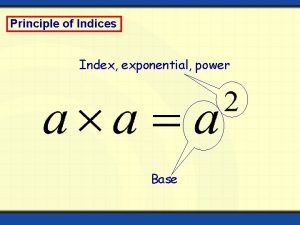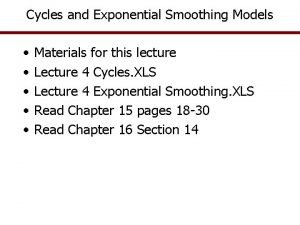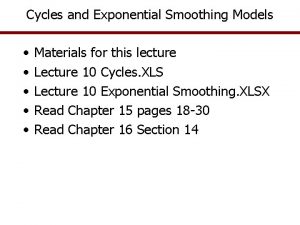TIME SERIES MODELS Exponential Smoothing and Seasonal Indices










- Slides: 10

TIME SERIES MODELS – Exponential Smoothing and Seasonal Indices

Exponential Smoothing Methods • This method provides an exponentially weighted moving average of all previously observed values. • The aim is to estimate the current level and use it as a forecast of future value.

Simple Exponential Smoothing Method • Formally, the exponential smoothing equation is • forecast for the next period. • = smoothing constant. • yt = observed value of series in period t. • = old forecast for period t. – The forecast Ft+1 is based on weighting the most recent observation yt with a weight and weighting the most recent forecast Ft with a weight of 1 -

Simple Exponential Smoothing Method • The implication of exponential smoothing can be better seen if the previous equation is expanded by replacing Ft with its components as follows:

Simple Exponential Smoothing Method • If this substitution process is repeated by replacing Ft-1 by its components, Ft-2 by its components, and so on the result is: • Therefore, Ft+1 is the weighted moving average of all past observations.

Simple Exponential Smoothing Method • The exponential smoothing equation rewritten in the following form elucidate the role of weighting factor . • Exponential smoothing forecast is the old forecast plus an adjustment for the error that occurred in the last forecast.

Simple Exponential Smoothing Method • The value of smoothing constant must be between 0 and 1 • If stable predictions with smoothed random variation is desired then a small value of is desire. • If a rapid response to a real change in the pattern of observations is desired, a large value of is appropriate.

Seasonal Analysis • Seasonal variation may occur within a year or within a shorter period (month, week) • To measure the seasonal effects we construct seasonal indices. • Seasonal indexes express the degree to which the seasons differ from the average time series value across all seasons.

Computing Seasonal Indices • Remove the effects of the seasonal and random variations by regression analysis: = b 0 + b 1 t > > • For each time period compute the ratio yt/yt This is based on the Multiplicative Mode which removes most of the trend variation • For each season calculate the average of yt/yt which provides the measure of seasonality. • Adjust the average above so that the sum of averages of all seasons is equal to number of seasons (Correcting the Seasonal Indices)

Deseasonalized Time Series Actual= time series Seasonally adjusted time series Seasonal index By removing the seasonality, we can identify changes in the other components of the time series, that might have occurred over time.
 Trend adjusted exponential smoothing
Trend adjusted exponential smoothing Exponential smoothing formula
Exponential smoothing formula How to calculate exponential smoothing forecast
How to calculate exponential smoothing forecast Exponential smoothing formula
Exponential smoothing formula Simple exponential smoothing forecast
Simple exponential smoothing forecast Exponential smoothing method
Exponential smoothing method Exponential smoothing forecast excel
Exponential smoothing forecast excel Polynomial time
Polynomial time Polynomial time
Polynomial time Polynomial vs exponential
Polynomial vs exponential Logarithmic curve fitting
Logarithmic curve fitting
